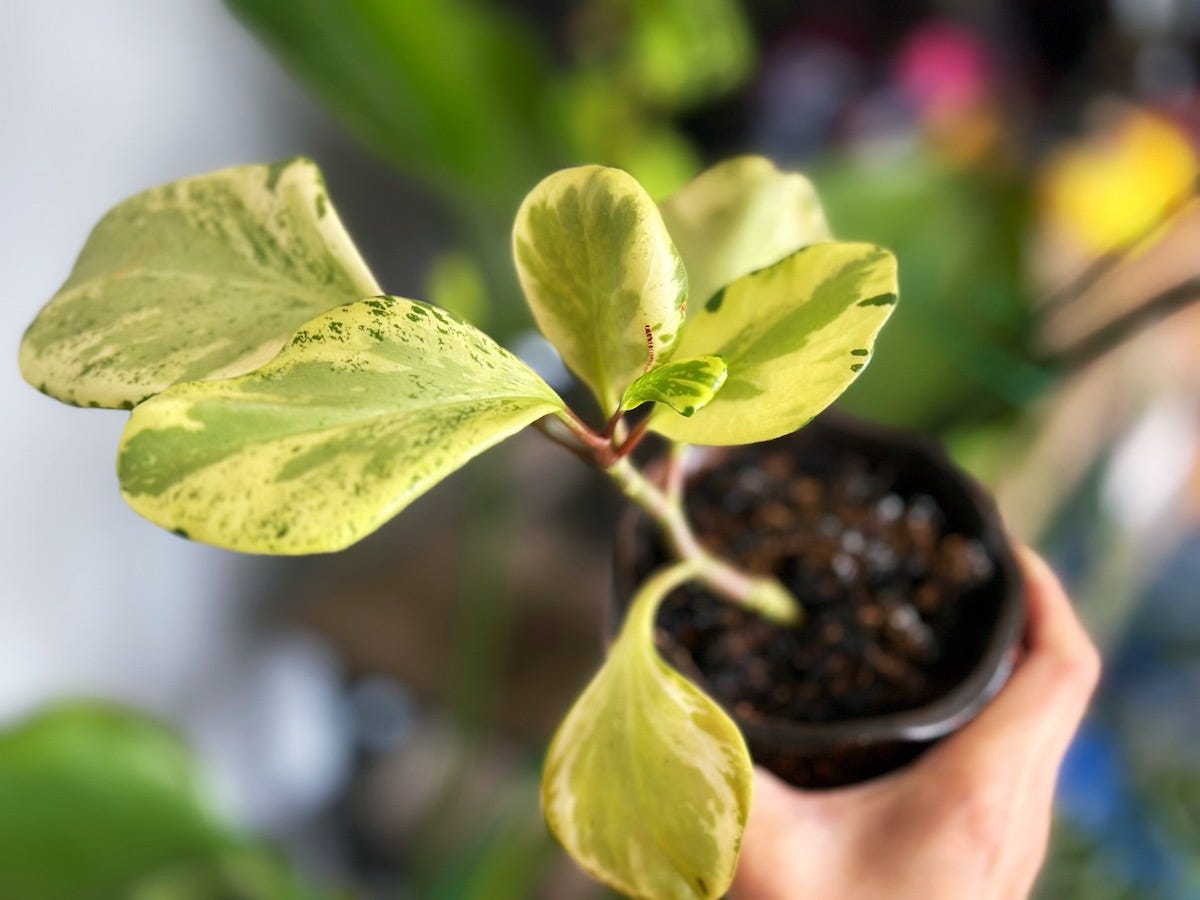Do you color outside the lines?
Getting used to the feeling of imperfection
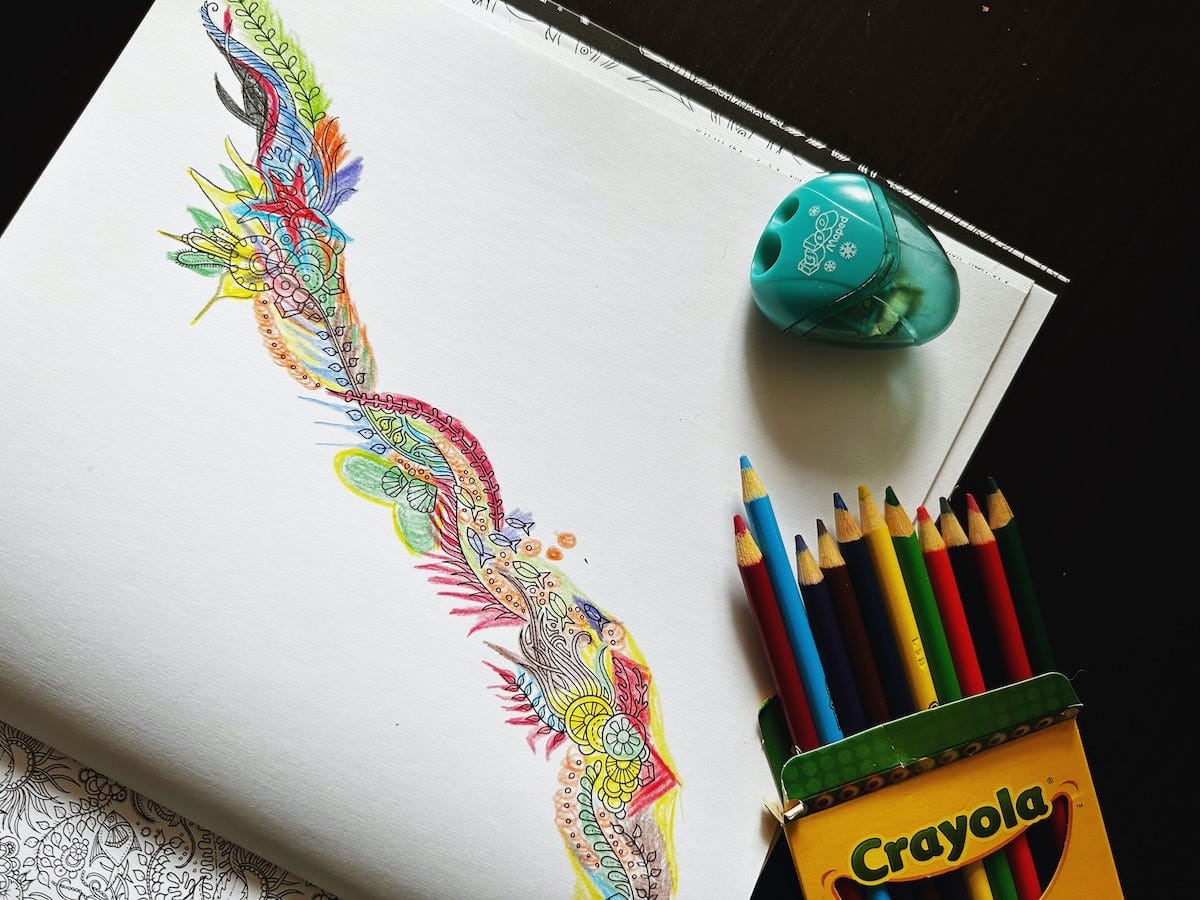
📝 Notes from Jenn:
Hi friends! Soleil Ho from the San Francisco Chronicle interviewed me as part of their column on tipping in coffee (gated but reader view works).
🛠 Current project: Do I really need more?? A friend alerted me to this miniature cafe kit, complete with an espresso machine and grinder. I still haven’t finished this mini cafe, but it doesn’t have an espresso machine. Who wants to join me in the mini kit?!
🔏 Last week, paid subscribers received a job performance warning letter to my brain. One of my few attempts at humor writing (is this a genre?). I’ve also unlocked the below article that was posted about two months ago about my new working schedule.
🍩 What I ate/drank/snacked on: cornmeal pancakes with blackberry compote (made by bf). Since we were both sick with a cold for a good portion of two weeks, we stayed away from restaurants and people. But thankfully, it was nice enough outside to enjoy brunch on the patio.


Being comfortable with failing
It may come as a surprise to no one, that I’m a perfectionist. I need to be 150% confident to make a decision, but now, with my determination to make timely decisions, I’m aiming for 70-80% confidence. I don’t remember where I read this advice, but I’ve been testing it out: try to do things you’re not good at. Intentionally fail or be bad at something. Enjoy the process and don’t focus on the finish line. Color outside the lines.
My perfectionism loves to run out in front of me like a circus funhouse clown. Here’s what I’ve done so far.
Pottery wheel intro class
I tried out a pottery wheel intro class. I didn’t go in with the intention of failing. In fact, I thought I would make a flower pot and saucer set. The instructor told me that I should be realistic, that it’ll be hard in the beginning. Of course, I pshed at this (in my head), thinking that I could still do it.
Little did I know that first, you must throw the clay down hard in the middle to stick. Then seal it (this part is easy). Then center it. All those videos that show a pot being made on a wheel? THEY MAKE IT LOOK SO EASY. Centering took the longest time, and we were warned about this. My first time, I thought, oh, it’s good enough. A little wobbly, but good enough. After all, I’m trying not to be a perfectionist! It turns out that “a little wobbly” in the centering shows up as a “dramatic difference” when building it up.
My first mistake was that I didn’t center perfectly. And second, I didn’t hold my arms in place steady enough to shape it symmetrically. I ended up with an extremely lopsided “pot” that I shaped somewhat into a water pitcher. This was not a shaping class. But good news, it fits my hand because I made indents for it and it kind of pours water.
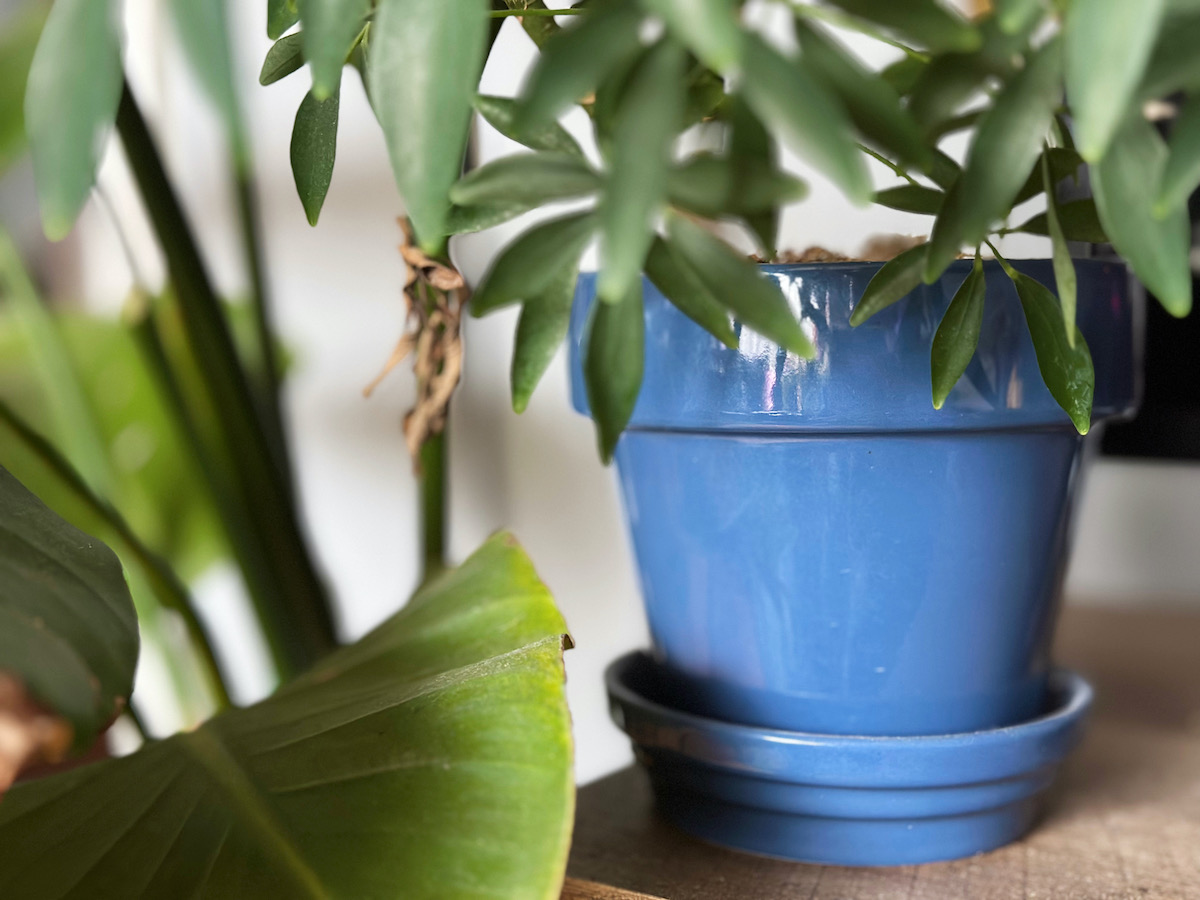
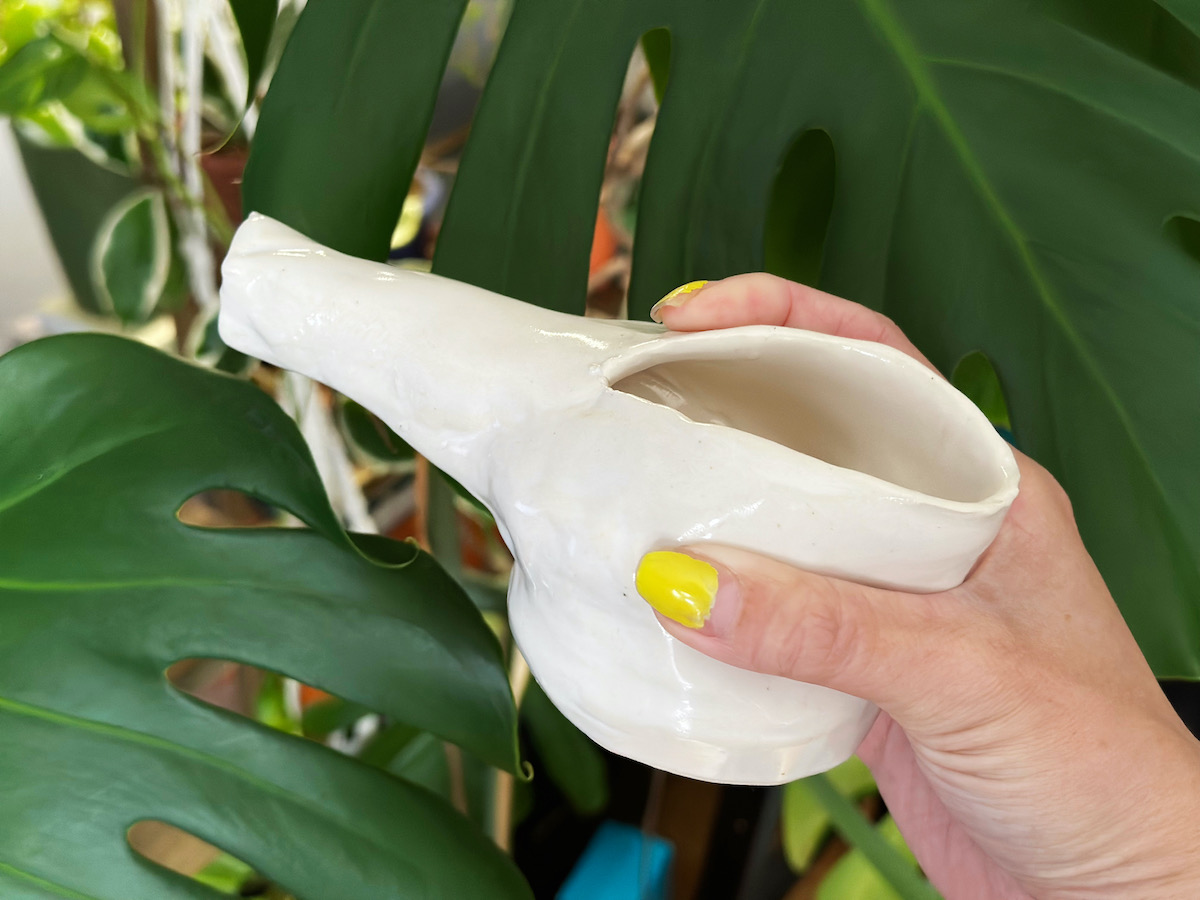
What I was aiming for vs what I made instead
The second time around on the wheel, I was more realistic. I was like, okay, I’ll make some cylinder shape. If it works as a pot, so be it. But you know I will be centering the crap out of it. And look how it turned out! There’s also a perfect little drainage hole in the bottom.
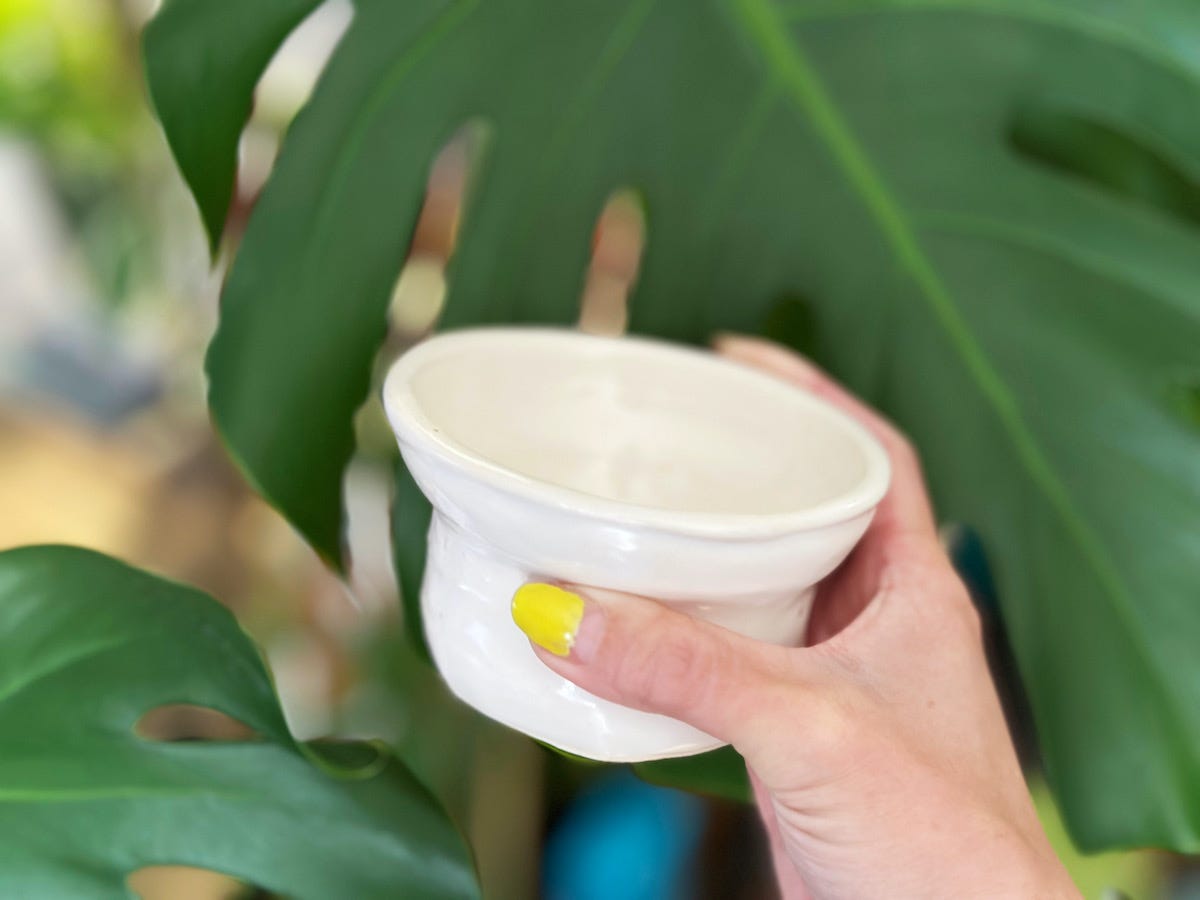
I’m not sure what this means for me, though. Because clearly, some perfectionist tendencies are necessary to form a symmetrical ceramic item.
Alcohol ink
I tried alcohol ink for the first time. Never done it before. My friend who is into crafts invited me to do this with her. She mixed the paint colors herself and used photo paper to drop the paint on.
I’ve never been good at the abstract sort of art. But, I decided to enjoy the process and not care about the outcome. I dropped paint into the middle, I dropped colors on top of colors, I let everything bleed into each other. I mashed the paper into the leftover paint pooling on the wrinkled trash bag. And look how it went! The result of this rash decision ended up far better than when I had planned it.
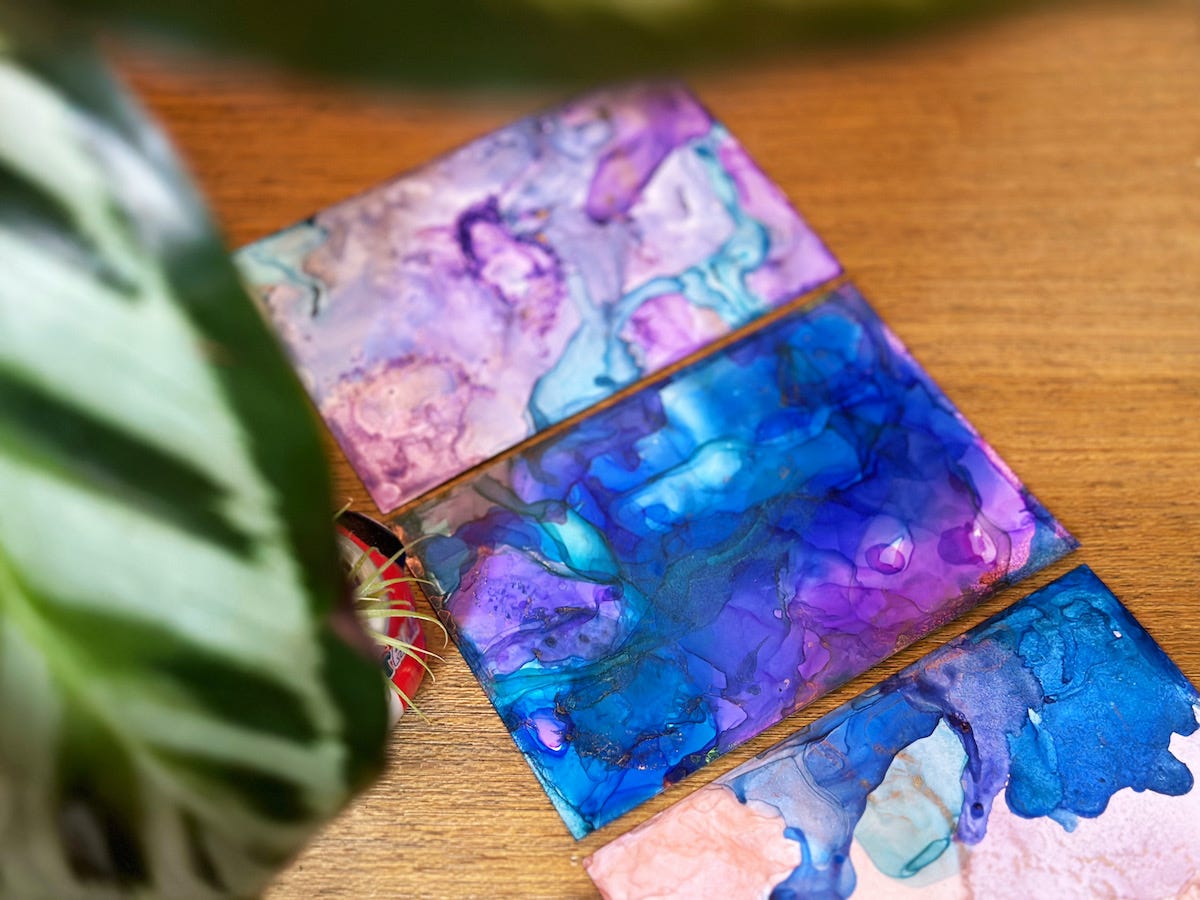
Coloring outside the lines
Are you someone who colors outside the lines or inside? I’ve always been an inside colorer. When adult coloring books started becoming popular, I bought an intricate “under the sea” book, but I had to stop. The whole point of coloring was to relax. I found myself trying to get the colors right and avoiding the same colors being neighbors across the line. It gave me more anxiety than when I first started.
To get more used to this feeling of imperfection, I decided to deliberately color outside the lines. When I told my boyfriend this, he asked, “Then what’s the point of the lines?” He’s also a perfectionist.
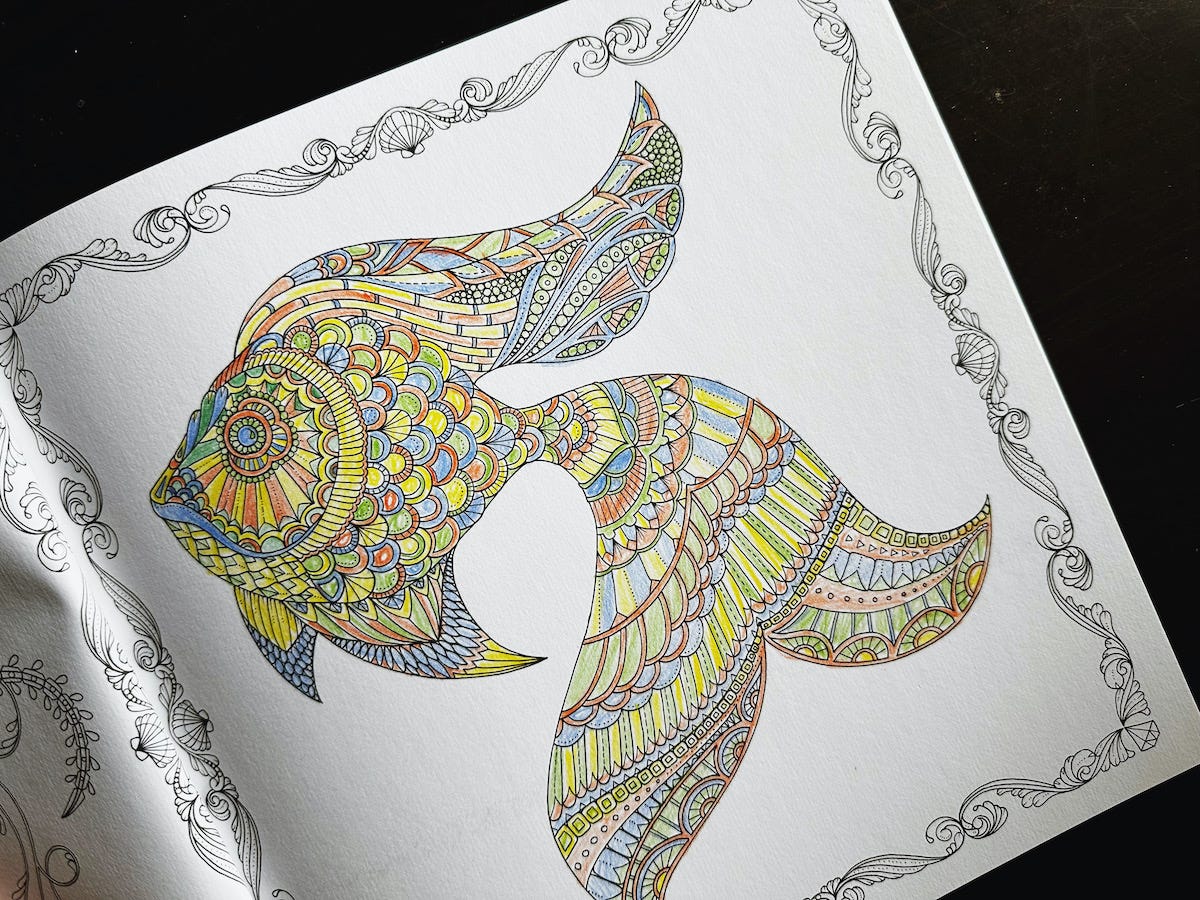
If you are an inside-line colorer, I dare you to color outside the lines. I sat for 20 min with the feeling of extreme uncomfortableness. I wondered, “So…should I add more stuff outside the lines? Should I scribble? WHAT ARE THE RULES??” Even in this attempt at coloring outside the lines, I was trying to create structure.

In the end, there were a few moments of “well, fuck this, I shall scribble nonsensically!” and “the only rule is that there are no rules!” and “okay, another rule is to do what you want!” I veered between anarchy and order.
But who said that you must color inside the lines? The art teacher? Parents? Why can’t we set our own lines and take the default ones as mere suggestions? Aren’t we told that beauty is in the eye of the beholder?
I looked through some of the research and think-pieces on this. In NPR, they asked, why even use a coloring book when free-form art would have the same effect?
That would achieve the same goals: developing motor skills, having fun, bonding ... but in a much more creative way. In economic terms, Milbrandt views coloring in terms of opportunity costs: "It's not that it's bad, but there are other things you could do that would be better."
For art teachers, the message is clear: Step away from the coloring book.
”We need to teach children to celebrate difference rather than celebrate conformity," Milbrandt says.”
And it makes sense. Coloring inside the lines is all about conforming to an established system. If you’re coloring an object, a child could see it as the “perfect” example of that object and get disillusioned that whatever they draw will never be good enough. Being locked into these lines does nothing for creative thinking or expression.

Perfectionism is commonly found among the oldest sibling, the child of immigrants, anxious people, and those with marginalized identities. I even wrote about how I don’t get the opportunity to fail, because failure isn’t an option. It is incredibly tough to unlearn all this.
Right now, my edible garden is my failure test. I was told tomatoes wouldn’t grow well where I am, but I’m trying anyway! Last year’s plants were a test to see if I could grow anything, and I did. This year, I did some liberal casting of seeds and made holes for others. If there are too many sprouts, then I’ll thin them out. Before, I feared removing crowded ones because I wanted them all to grow. But they’re not all destined to grow. Some are destined to become microgreens on top of my smashed avocado toast (just kidding, I rarely make this at home, I’m not that Californian).
I’m going to continue in my quest for faster decision-making through these safer avenues of experiencing failure.
But I am curious to know a few things from you:
- When you were a kid, did you color outside the lines? If so, are you in a creative field now?
- If not, will you challenge yourself to color outside the lines and sit with whatever feelings come up?

👀 interesting reads
- Can dogs smell time? Just ask Donut the dog [NPR]: This is from 2022 but I only just learned this and it combines a few of my favs: dogs, animal behavior, donuts.
Every school day Matt and his brother would be away from their home for approximately the same amount of time. And right before the school bus arrived, their smell in the house would drop to about the same level.
- Revealing the Smithsonian’s ‘racial brain collection’ [Washington Post]: Trigger warnings all over for this, so I am not going to quote from it.
- Richard Hanania, Rising Right-Wing Star, Wrote For White Supremacist Sites Under Pseudonym [HuffPost]
Hanania is championed by tech moguls and a U.S. senator, but HuffPost found he used a pen name to become an important figure in the “alt-right.”
- Tell Me Why It Hurts [New York Magazine]: If, like me, you cannot get past the first chapter of “The Body Keeps the Score,” may I recommend “What My Bones Know.” It is hard to get through at times, but it felt better in approach than van der Kolk’s book. Stephanie Foo does an amazing job in analyzing generational, immigrant trauma and navigating her C-PTSD diagnosis.
Today, van der Kolk’s renown — built on translating neuroscience into language accessible to people searching for a cure for their pain — has placed him in a position straddling scientific celebrity and guru.

My most recent garden harvest: two dozen sugar snap peas, a lot of Swiss chard, spinach, and a handful of carrots.
